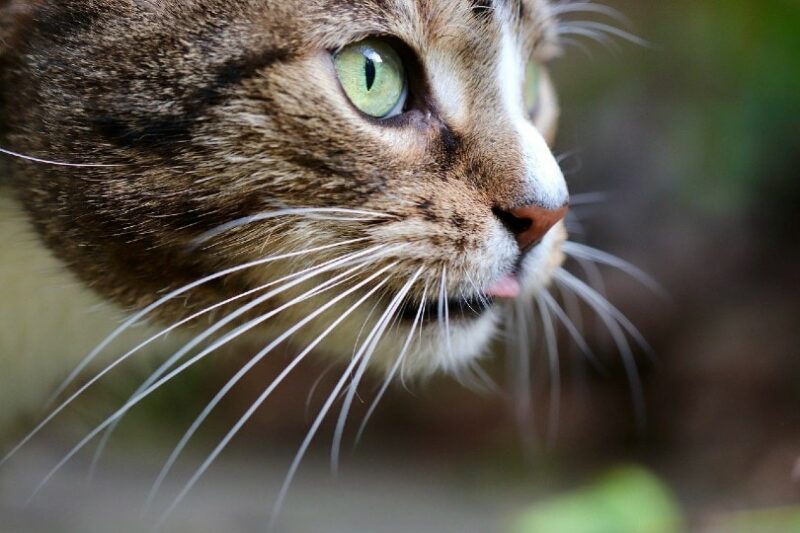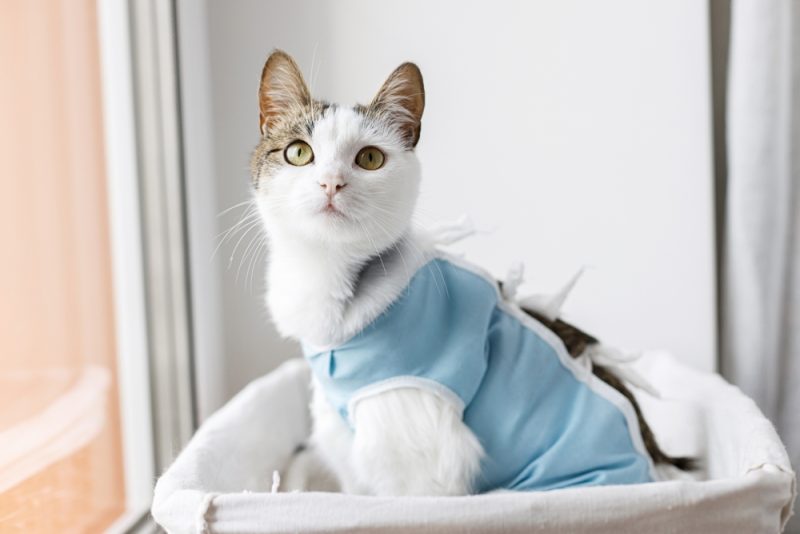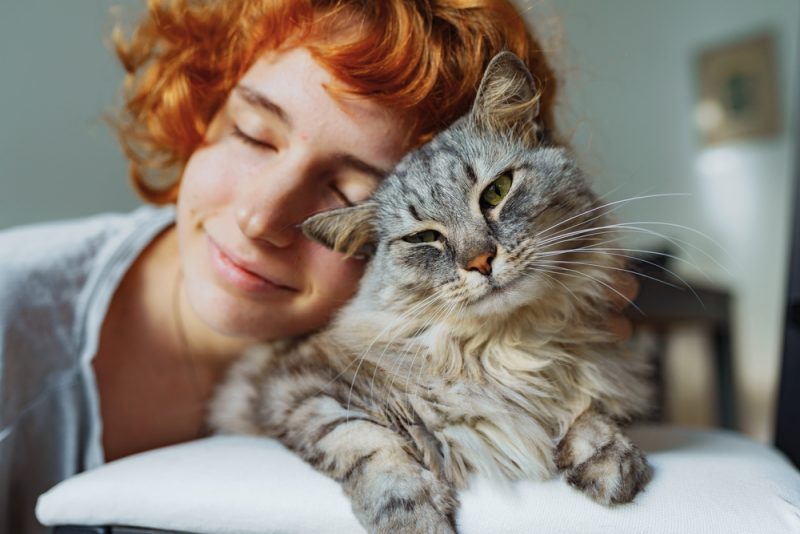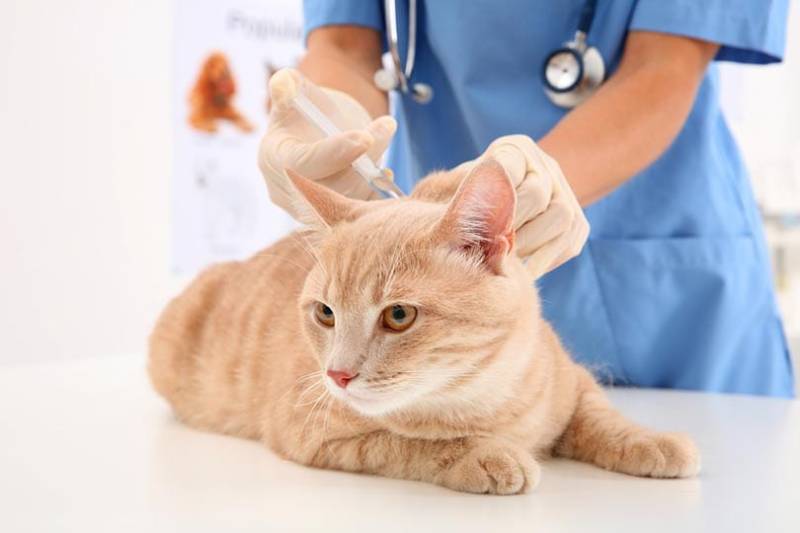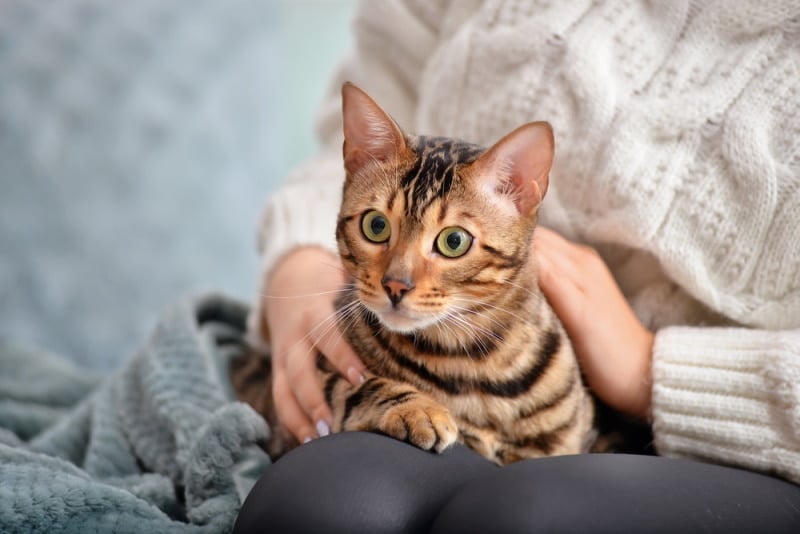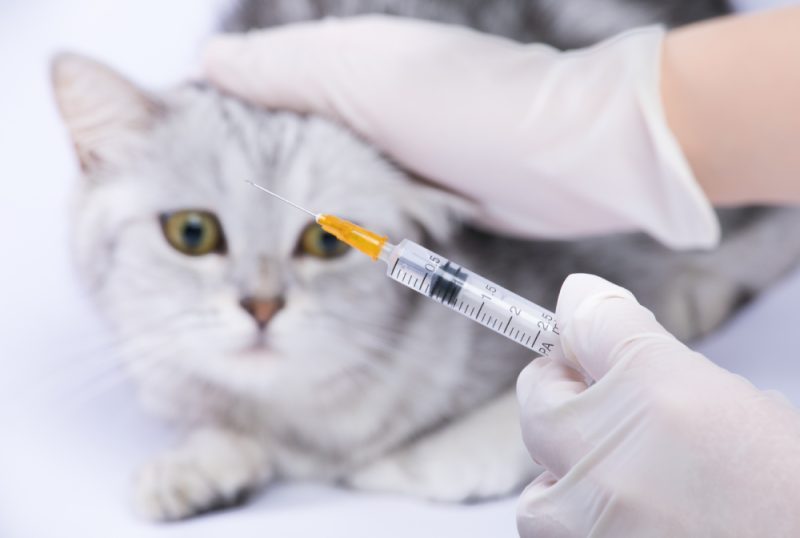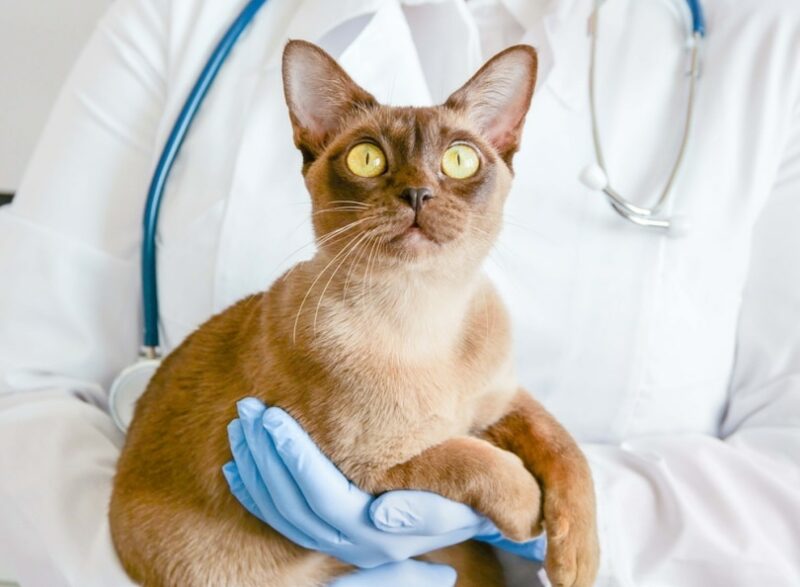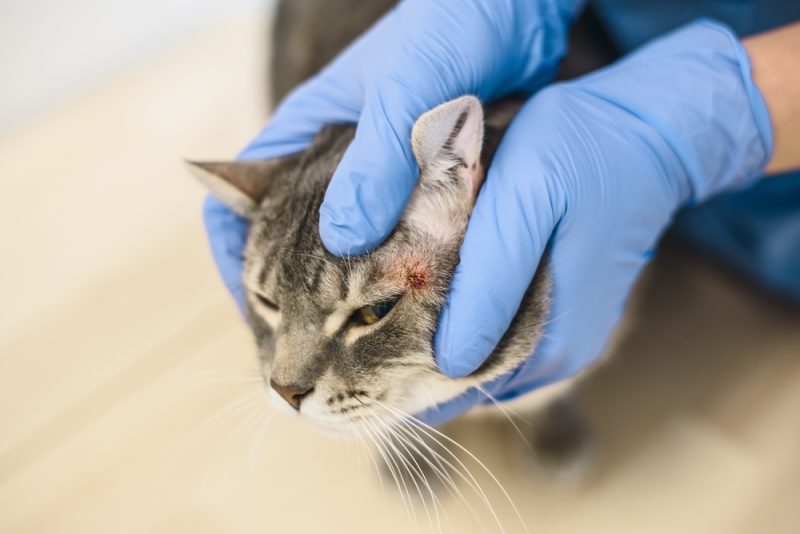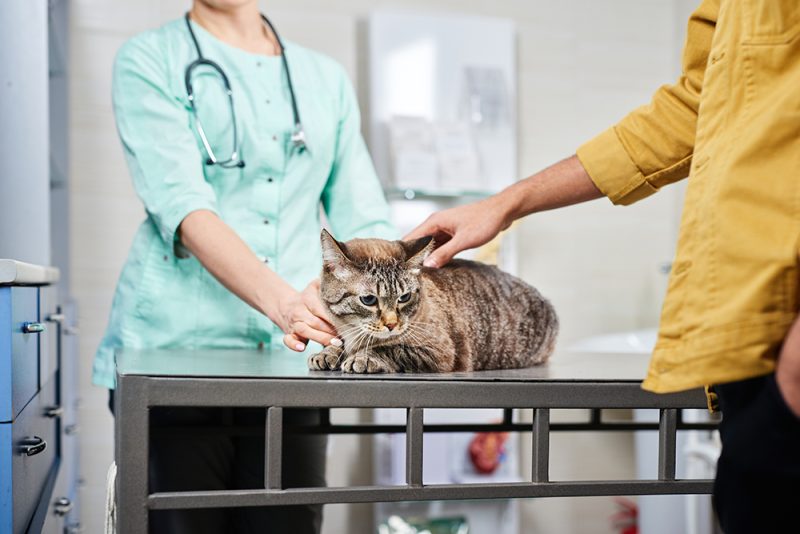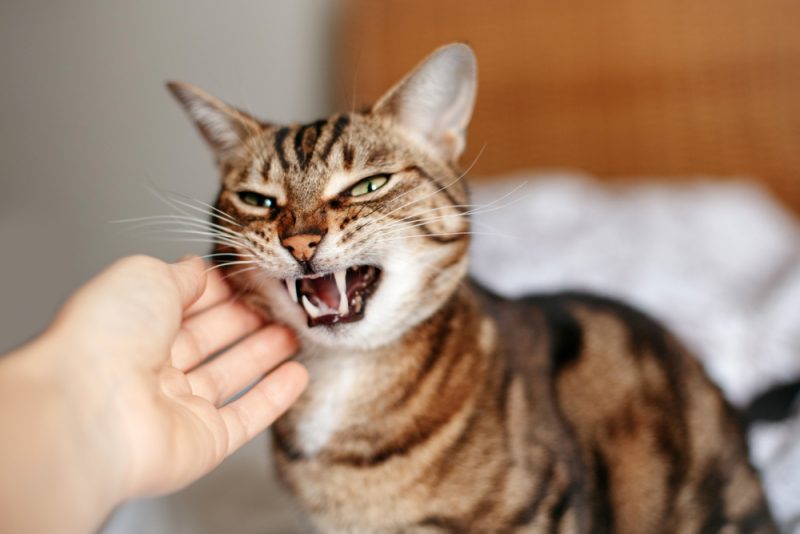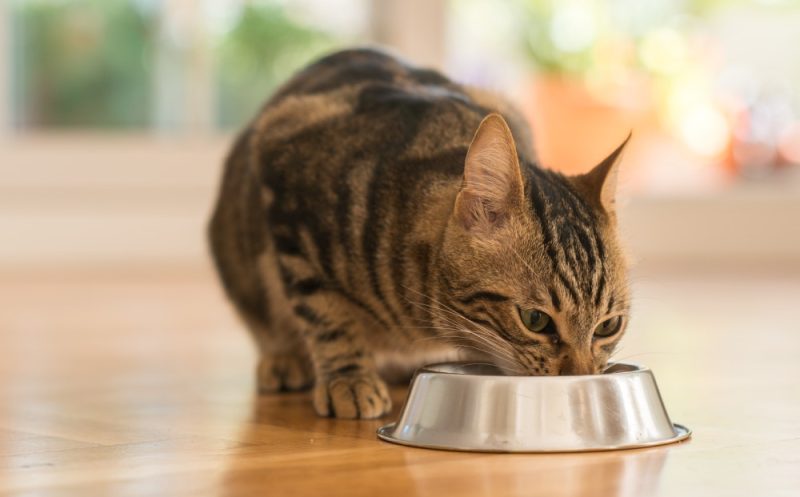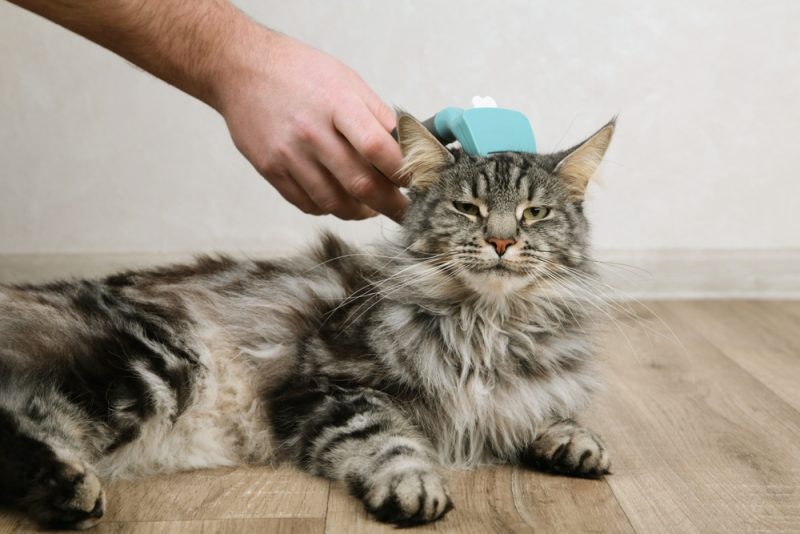Cats have amazing sensory abilities. They can see in low light conditions that people struggle to navigate and can rotate their ears 180 degrees. Their noses even put ours to shame; cats are thought to be able to smell 14 times better than humans! In addition to these amazing sensory powers, cats also receive input from their whiskers!
Each feline whisker rests in a nerve bed, and information picked up by your cat’s whiskers goes directly to their brain. The whiskers are incredibly sensitive, like human fingertips. Cats’ whiskers are arranged in rows on each cheek, and most have about 12 whiskers on each cheek arranged in 4 rows, although this can vary. They also have whiskers on their chins and on the back of their front legs, at the “wrist” aka the carpal joint; these are known as carpal whiskers.
If your cat’s whiskers appear to be a bit short, you may be wondering if there’s a reason and if you need to be worried. Keep reading for seven possible reasons why your cat’s whiskers may be so short.

The 7 Vet-Approved Reasons Why Your Cats Whiskers Are So Short
1. Weight Gain
Cats’ whiskers generally grow to about the width of their bodies, but those who gain a few pounds after reaching adulthood sometimes have whiskers that don’t keep up with their girth. It can be difficult to determine whether your pet is overweight as you see it every day, but using a Body Condition Score Chart can be very useful for objectivity.
Ask your veterinarian for guidance about your pet’s ideal weight; they will be very happy to help.
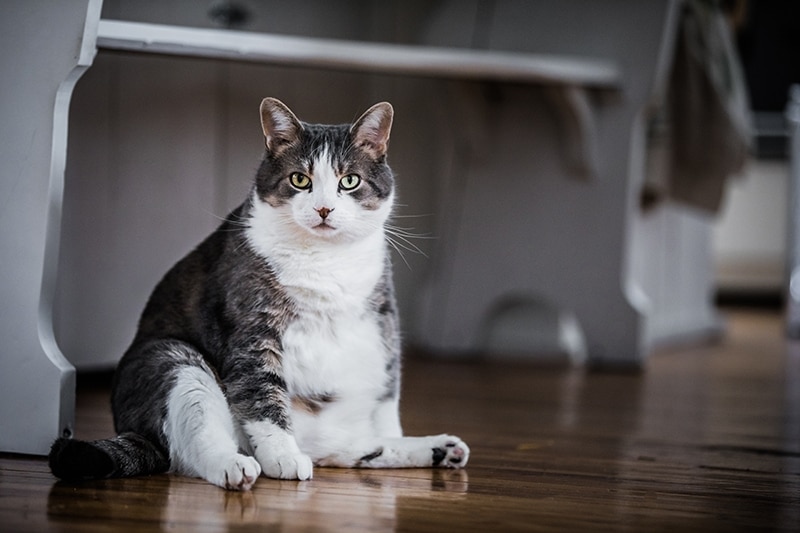
2. Mange
Mange isn’t just one condition but a term used to describe any parasitic infestation of mites. Several species of mite can live on our cats, each of which causes a different type of mange, including walking dandruff (Cheyletiellosis) and scabies.
Signs usually include intense scratching, during which cats sometimes break off whiskers. Sores and inflammation are also often present. The diagnosis of mange usually involves microscopic examination of debris or skin scrapings. Treatment will involve medication to eliminate the parasite and help with any itching and pain.
3. Auto-immune diseases
Auto-immune diseases such as pemphigus (a complex of five auto-immune skin diseases) and vasculitis, or blood vessel inflammation are relatively uncommon in cats, but they certainly do occur. When they do show up they are accompanied by signs such as redness, pustules, ulcers, crusting, scaling and sometimes dying tissue, as well as some with more systemic signs (in the case of vasculitis). These conditions can be incredibly painful and itchy for cats and they rub and traumatize their faces (in particular) which may lead to the loss or shortening of their whiskers.
Determining what’s causing the condition can be challenging, but possible triggers include certain medications and vaccinations. Diagnosis is usually by a skin biopsy and treatment is usually by immuno-suppression and infection control.
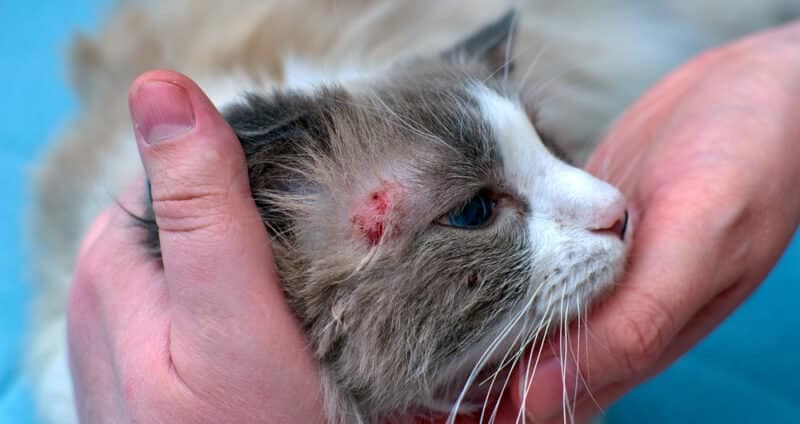
4. Allergies
Cats that suffer from allergies can sometimes end up losing hair and whiskers. Food and environmental allergies are common culprits, but flea allergies are most common. Some cats are allergic to the saliva of the flea, so that even just one bite of a flea can cause a huge reaction including excessive grooming, rubbing, and scratching. This allergy is known as Flea Allergic Dermatitis.
Food allergies aren’t that common in cats, but they’re usually related to proteins found in beef, fish, and chicken when they occur. Food allergies are often helped by feeding cats novel protein or hydrolyzed food diets. Cats suffering from environmental allergies sometimes benefit from medications and dietary changes.
5. Acne
Feline acne often looks like bumps on a cat’s chin. It occurs when hair follicles become clogged due to the overproduction of keratin. The condition can happen just once or become more long-term.
Chronic feline acne can result in the development of folliculitis (inflammation of the hair follicles) and lesions that sometimes burst. If bacteria invade the follicles, infections can sometimes set in and cause the formation of pustules and furunculosis (larger sores similar to boils). The pain and irritation of feline acne can cause a cat to rub and scratch at its face, and in so doing, damage its whiskers.
What causes cat acne isn’t well understood, but it is thought to be linked to the overproduction of sebum (the oils produced by the skin) . Stress, viruses, poor facial hygiene and allergies are thought to be related to the condition but this is still under investigation. Treatment often involves antibiotics, medicated shampoos, and special face-washing routines as well as a change from a plastic food bowl to a ceramic one
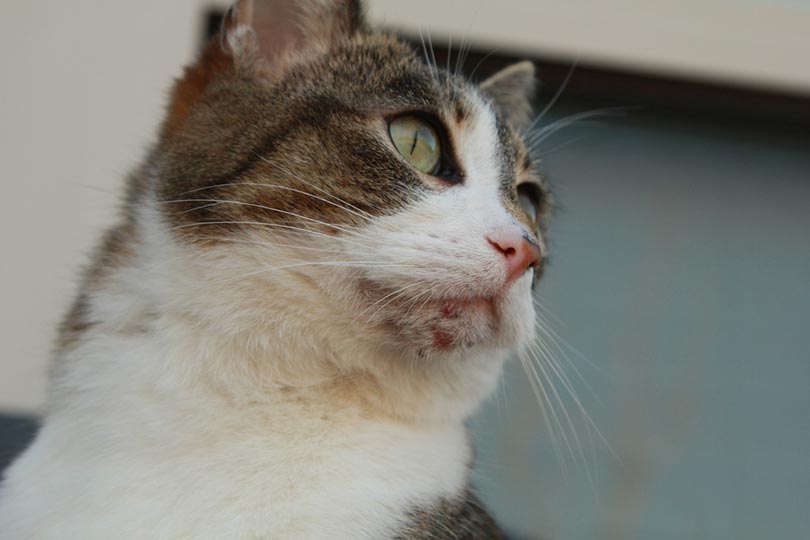
6. Trauma
Cats sometimes end up with short whiskers because something happens to shorten them. A run-in with a lit candle or hot stove can shorten feline whiskers in a snap.
They can also break off when cats get into altercations with other animals due to rough-and-tumble play. These injuries are usually not much to worry about as the whiskers will grow back, given time.
7. Infections
Infections around a cat’s face and mouth can often result in hair loss and whisker problems. Skin infections are often incredibly itchy, and a cat’s whiskers can end up broken as pets attempt to scratch aggravating places around their faces. The infections can be caused by fungi (such as ringworm), bacteria, or parasites.
Signs often include inflamed skin that’s accompanied by oozing and scabbing. The treatment depends on what’s causing the problem and can include oral and topical medications. Cats that appear to be suffering from infections must be seen by the veterinarian.
If you need to speak with a vet but can't get to one, head over to PangoVet. It's an online service where you can talk to a vet online and get the advice you need for your pet — all at an affordable price!


What Do Whiskers Do?
Whiskers pick up air currents and other sensory information and relay it to cats’ brains. Because cats don’t have great up-close vision, they often use the information their whiskers provide to learn about nearby objects.
Cats use their whiskers to communicate if they’re happy and relaxed or not having a good time. Whiskers tell cats whether they can fit into tight spaces and also help them stay balanced; it’s one reason they can right themselves during falls.

Conclusion
Cats’ whiskers are incredibly sensitive, and each one sends sensory information directly to your pet’s brain. Cats can pick up on minute air currents that allow them to navigate low-light conditions and figure out where things are without relying on up-close vision.
Cats’ whiskers can be damaged by conditions that cause coat problems, including mange, fleas, vasculitis, and infections. Your cat’s whisker health is important, so speak with your veterinarian if you have concerns about this vital part of your feline’s body.
Featured Image Credit: Annette Meyer, Pixabay
